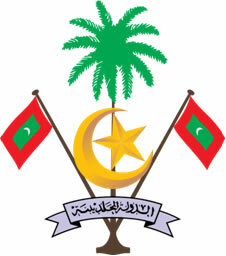Located on the Asian continent, the Republic of Maldives is made up of approximately 1,200 islands in the Indian Ocean. This small island country is situated to the southwest of India and its only real border is with the Indian state of Lakhedives (to the north).
Former British protectorate, between 1887 and 1965, the Republic of Maldives won its independence on 25 July 1965. Currently, it is part of the British Community, an association formed by the United Kingdom and its former colonies.
Its territory has flat relief and low altitudes, a fact that generates great instability with regarding the threat of flooding as a result of rising sea levels caused by warming global.
The Republic of Maldives is a privileged place in terms of natural aspects – it has blue, warm and transparent waters, in addition to extensive areas with coconut trees. All these beauties attract millions of visitors, which is an activity of fundamental importance for the national economy.

Maldives natural beauty
Tourism was boosted in the country from the 1970s onwards, becoming one of the main sources of income. Fishing also plays an important role in the national economy. The industrial sector has developed in recent years and is based on the textile and food segments.
Do not stop now... There's more after the advertising ;)
The country has shown some improvements in socioeconomic indicators. The infant mortality rate is 22 for every thousand live births. Illiteracy has shown significant reductions and currently only 3% of the population is illiterate.

Coat of arms
Maldives data:
Territorial extension: 298 km².
Location: Asia.
Capital: Male.
Climate: Equatorial.
Government: Presidential Republic.
Administrative division: 21 districts.
Languages: Dhivehi (official).
Religion: Islam 98.4%, others 1.6%.
Population: 309,430 inhabitants. (Men: 156,260; Women: 153,170).
Composition: Maldives 97%, Arabs 2%, other 1%.
Demographic density: 1,038 inhab/km².
Average annual population growth rate: 1.4%.
Population residing in urban areas: 39.19%.
Population residing in rural areas: 60.81%.
Life expectancy at birth: 67.6 years.
Households with access to drinking water: 83%.
Households with access to a health network: 59%.
Human Development Index (HDI): 0.602 (average).
Currency: Rufia.
Gross Domestic Product (GDP): 1.3 billion dollars.
GDP per capita: $3,454.
External relations: World Bank, Commonwealth, IMF, WTO, UN.
By Wagner de Cerqueira and Francisco
Graduated in Geography
Brazil School Team
countries - geography - Brazil School
Would you like to reference this text in a school or academic work? Look:
FRANCISCO, Wagner de Cerqueira e. "Maldives"; Brazil School. Available in: https://brasilescola.uol.com.br/geografia/maldivas.htm. Accessed on June 27, 2021.

